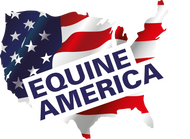Keeping Fit and Flexible for Horse Riding
There is no other sport quite like riding, whether you’re a dressage protege, a showjumping superstar or simply a happy hacker exploring the countryside. You as a rider need to keep at your best, ensuring that your horse can rely on your strength of mind and body to lead the way.
When you ride, you're engaging almost every muscle in your body. From maintaining your balance in the saddle to using subtle cues with your legs and body, every move you make requires a high level of coordination and flexibility. Tight muscles or restricted range of motion can limit your ability to communicate clearly with your horse, leading to misunderstandings and less fluid movements.
Flexibility doesn’t just affect how you sit in the saddle; it also impacts your ability to absorb and adjust to the movement of the horse. Riders with tight hips or hamstrings, for example, might find it difficult to maintain an upright posture or follow the horse’s motion effectively, which can lead to discomfort, poor form, and even injury over time.
Strong core muscles are crucial for maintaining balance and stability while riding our seat is essential to ensuring comfort for both you and your horse. By engaging the core, we stay centred, which in turn reduces strain on joints, especially the hips and lower back.
Legs are our key to communication when riding, we need powerful legs for a clear communication with our horse. Simple everyday exercises that focus on the strengthening of quads, hamstrings, and calves helps with posture and reduces strain on the knees, hips, and ankles. Also allowing even the smallest nudge a nice simple instruction to help develop your awareness of one another.
Regular stretching and flexibility exercises help keep muscles and joints supple, which is essential for proper positioning in the saddle and effective communication with the horse. Read more about suitable stretches for every rider here.
It can be easy to forget, but as a rider you do need to focus on maintaining healthy joints through low-impact exercises when not riding, such as swimming or cycling. These exercises allow the strengthening of surrounding muscles which support your joints and can help reduce the possibility of injury. Activities like yoga or Pilates help improve core strength, leading to better stability and assisting the rider in moving with the horse, reducing strain on the rider’s joints and minimizing the risk of falls or awkward movements.
Using joint supplements like Ultra Human Cortaflex which are scientifically formulated using only the best and most innovative ingredients to help support the body in improving the mobility of your joints. We’ve packed this essential supplement with key micronutrients and perfect ratio or glucosamine, chondroitin and hyaluronic acid for joint support. John Whitaker swears by Cortaflex - "The proof is in the pudding. Both Welham and Gammon won the Hickstead Derby at over 20 years old with the help of Equine Cortaflex, it is exceptional, and I’ve been using it ever since! I even take the Human Cortaflex myself to keep me going!"
We are all aware how good posture and alignment prevents excessive strain on joints. Maintaining a straight spine, with shoulders back and feet properly positioned, minimizes joint wear, particularly in the knees and lower back.
A strong cardiovascular system ensures the rider can maintain stamina and energy throughout a ride, reducing the risk of fatigue-induced poor posture or overcompensation that may lead to joint discomfort, keeping on top of your Ultra Human Cortaflex supplements can alleviate discomfort and maintain your joints because it’s packed with micronutrients that help build collagen for the function of cartilage.
We as riders tend to forget to warm-up and cool-down ourselves.Pre-ride stretching and warm-up exercises improve circulation and flexibility, while post-ride cool-down stretches can help prevent stiffness, especially in the hips, knees, and lower back.
Finally, always ensure your saddle, stirrups, and other equipment fit correctly this can reduce unnecessary strain on your joints, particularly the knees and lower back. Poor equipment fit can lead to misalignment or discomfort for both you and your horse.
 Skip to content
Skip to content

